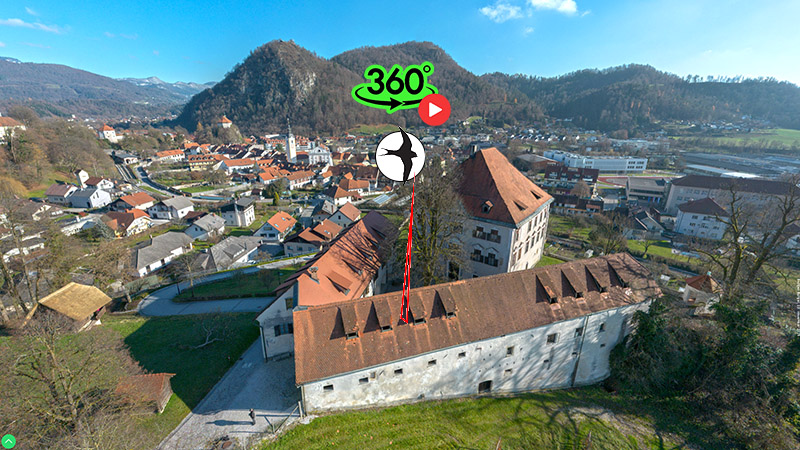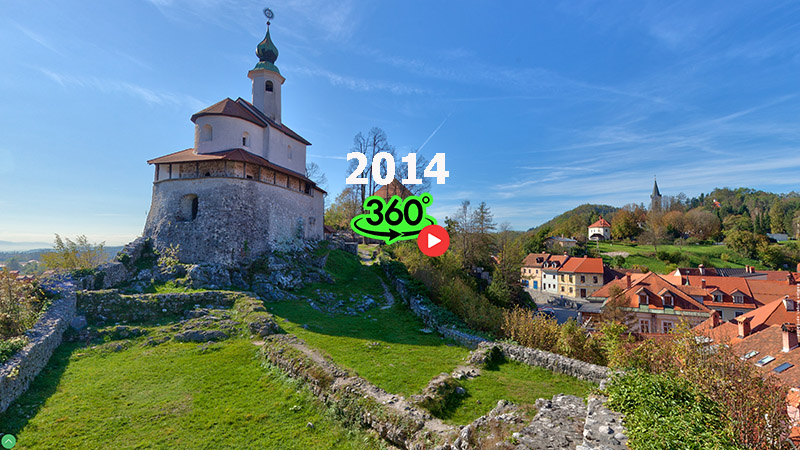Kamnik
 SLOVENIAKAMNIK-SAVINJA ALPS SLOVENIAKAMNIK-SAVINJA ALPS
Kamnik is a small town in the northern area of the Osrednjeslovenska (Central Slovenia) region, historcal part of Gorenjska. The town has a population of 13,700 and is the center of the municipality of Kamnik with 30,000 inhabitants (2022). The town is spread along the Kamniška Bistrica River, which originates in the Kamnik-Savinja Alps. In addition to the old town, Kamnik has several urban areas: Bakovnik, Duplica, Fužine, Jeranovo, Novi trg, Perovo, Šutna, Zaprice and Žale. His cultural and historical landmarks and the old town give him a pleasant homeliness. Kamnik was mentioned as with the officiall status of the town in 1229. It was cosmopolitan for the situation at the time, as well -known noble families hosted and resided.

The town of Kamnik, mentioned in 1061, became the settlement with the status of the market at the end of the 12th century and in 1229 the city. The history of the town is reminded of the ruins of the old castle (Zgornje Castle) and the small castle, the old town with narrow streets, and many more interesting details. Interesting is the legend of the enchanted Countess Veronica, half -girl and half a snake. It is supposed to protect the hidden treasure in the vicinity of Mali grad.

In Kamnik, the Bavarian counts of Andes mint their coins. In the 13th century, several towers were erected and erected. For a while, Kamnik was the capital of Carniola (nowadays central Slovenia region), and later in addition to Ljubljana, the most influential country town. In the town had developed blacksmith and knife crafts. Since the 14th century, Kamnik has been the seat of a provincial court. As a medieval mall, the settlement began to collapse in the 17th century, when the traffic route through the Tuhinj Valley, which was an important medieval connection between Trieste and Vienna was routed to Trojane Pass. During the French occupation and Illyrian provinces, the craft was revived, in the second half of the 19th century the industry began to develop. In 1853, gunpowder production facility was established, in 1857 the cement plant began to work in Mekinje and in 1896 the factory of the metal products of Špalek. Following the construction of the Ljubljana-Kamnik railway line in 1891, the town established itself as a climate spa resort according to Kneipp's treatment. Kamnik is also a touristy destination today. In addition to historical and cultural sights, it is an excellent starting point for excursions and mountaineering in the surrounding Kamnik Alps.
During World War II, the industry, in particular, developed. Industrial wood processing factories were created; The most famous was the Stol Furniture Factory, the gunpowder developed (KIK), the Titan Metal Products, the mustard factory (ETA) and the Svilanit textile factory were new. After Slovenia's independence in 1991 and the loss of the internal Yugoslav market, industrial production was very stagnant and several industrial establishments collapsed.
At the end of the 19th century, the old town became important as a place where nature and mountaineering lovers come from everywhere. Visitors know him as a starting point for trips. Many along the Kamniška Bistrica, along the glacial valley, head towards its source in the heart of the Kamnik-Savinja Alps. Along the river, the Kozelj path leads, which also leads past the famous Predaselj Gorge. The Valley of Kamniška Bistrica is popular for non -expensive recreational activities at the propema and attracts many visitors. In the southern area of the municipality, near the left bank of the Kamniša Bistrica River, is the famous Volčji Potok Arboretum.
Due to its proximity to the capital and good traffic connection, Kamnik has become interesting for immigration to which strong daily migration testifies.
|